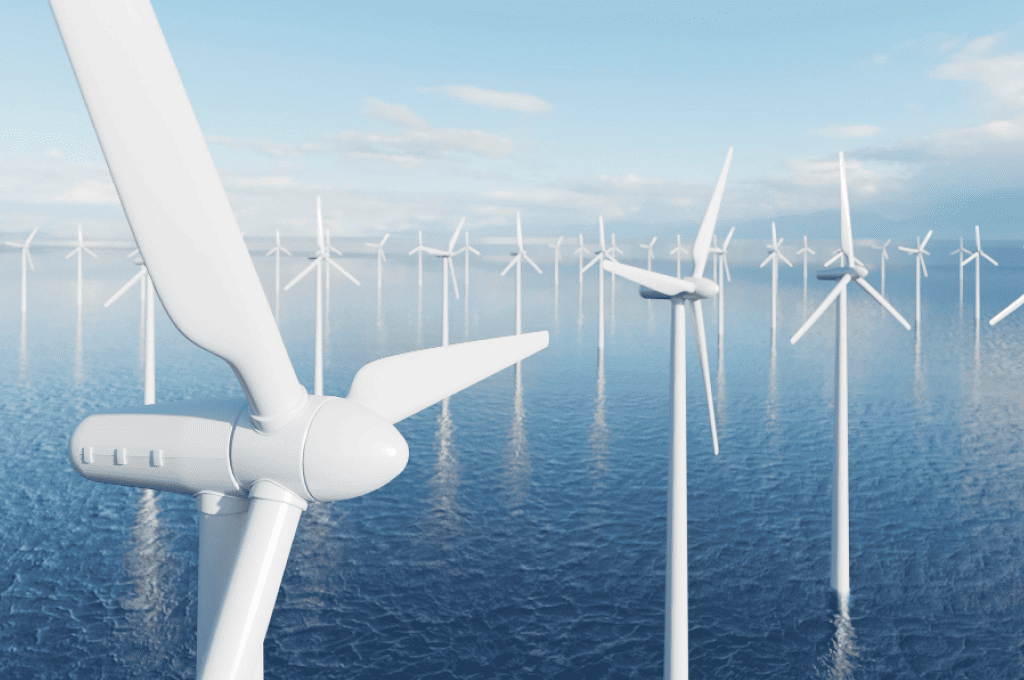
Product walkthrough, trial, POCs, enterprise offering, support and more. Speak with one of our specialists.


Product walkthrough, trial, POCs, enterprise offering, support and more. Speak with one of our specialists.

Tech and Innovation

Wind energy has become one of the most attractive renewable energy sources in the world. Not only because it is environmentally friendly, but also due to its abundant potential that has not been fully utilized, especially in developing countries such as Indonesia. Amid global efforts to reduce carbon emissions and dependence on fossil fuels, wind power plants (PLTB) have emerged as a promising solution.
Wind energy is the energy derived from the movement of air in the atmosphere. This movement is caused by differences in air pressure due to uneven heating of the Earth's surface by the sun. In the past, wind energy was used for simple purposes such as powering watermills and sailing ships. Today, it has advanced significantly and is used to generate electricity through PLTB.
A PLTB, or Wind Power Plant, is a power generation system that uses wind turbines to capture kinetic energy from the wind and convert it into electrical energy. In PLTBs, large blades are mounted on tall towers. When the wind blows and turns the blades, this motion is converted into electricity with the help of a generator.
Giant blades are installed atop towers ranging from 80 to 120 meters high. When the wind blows and hits the blades, they begin to spin. This rotational energy is transferred via the main shaft to a gearbox that increases rotational speed, which in turn drives the rotor inside the generator to produce electricity.
The electricity generated is then sent to a transformer to be stepped up in voltage before being fed into the national grid. This entire process occurs without carbon emissions or fuel consumption, making it one of the most environmentally friendly energy sources.
PLTBs are divided into two main types: onshore (land-based) and offshore (sea-based). Offshore PLTBs generally have greater energy potential due to stronger and more consistent winds at sea, but they also have significantly higher initial and maintenance costs compared to onshore PLTBs because of technical challenges like sea foundations, undersea cables, and difficult access.
One of the main reasons many countries are turning to wind energy is because it is renewable and does not produce greenhouse gas emissions. Unlike fossil fuel-based power plants, PLTBs require no fuel, so their operation does not cause air pollution.
In addition, PLTB operational costs are relatively low after construction. Turbine blades can operate for 20 to 25 years with minimal maintenance. This technology also creates economic development opportunities in remote areas since turbines can be installed far from cities without requiring complex distribution networks.
However, wind energy is not without its drawbacks. The biggest challenge is that wind is not always stable. Because wind energy is intermittent, wind power plants cannot be the sole electricity source without energy storage systems or backup generators.[Ref]
Some challenges faced by PLTBs include:
As an archipelago with long coastlines and vast geographic areas, Indonesia has great potential for wind energy development. Regions such as East Nusa Tenggara, South Sulawesi, and parts of East Java have consistent wind speeds year-round.
One of the largest PLTB projects in Indonesia is the Sidrap PLTB in South Sulawesi, which began operating in 2018. This project has a capacity of 75 MW and can supply electricity to more than 70,000 households[Ref]. Other projects include the Jeneponto PLTB and several planned developments in eastern Indonesia.
However, utilization of wind energy in Indonesia is still low compared to its potential. According to the Ministry of Energy and Mineral Resources (ESDM), Indonesia's installed PLTB capacity is still below 200 MW, far from the technical potential of thousands of megawatts.[Ref]
The government has included renewable energy development, including wind energy, in the National Energy General Plan (RUEN). However, implementation is often hampered by regulatory issues, land acquisition problems, and a lack of investment incentives.
The future prospects for wind energy are promising both globally and nationally. Countries such as Germany, Denmark, and China continue to increase their PLTB capacity. Some European regions are combining wind energy with large-scale battery storage and hydrogen green energy to address intermittency.
Wind turbine technology continues to improve. New-generation turbines are designed to capture energy from lower wind speeds and operate more efficiently. The smart wind farm concept, which uses artificial intelligence to optimize blade positioning for maximum efficiency, is also being implemented[Ref].
In Indonesia, with stronger regulatory support and collaboration between government and private sectors, PLTBs could become a key part of the national energy mix. International attention on energy transition in developing countries also provides opportunities in the form of grants, soft loans, and technology transfer.
Wind energy through PLTBs offers a major opportunity to create clean, sustainable, and inclusive energy systems. While there are still technical and economic challenges, technological advances and growing environmental awareness are strong driving forces.
For Indonesia, harnessing wind energy is not just about generating electricity, but also creating new jobs, reducing dependence on fossil fuels, and ensuring environmental sustainability for future generations. With its natural potential and strong political will, Indonesia's wind energy future could be far brighter than we imagine today.






















Jejakin’s green programs combine high-tech monitoring, biodiversity restoration, and community-led initiatives to deliver powerful, sustainable change across ecosystems.








